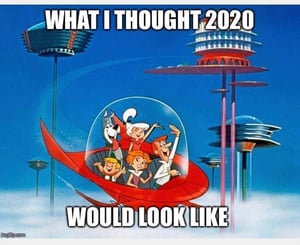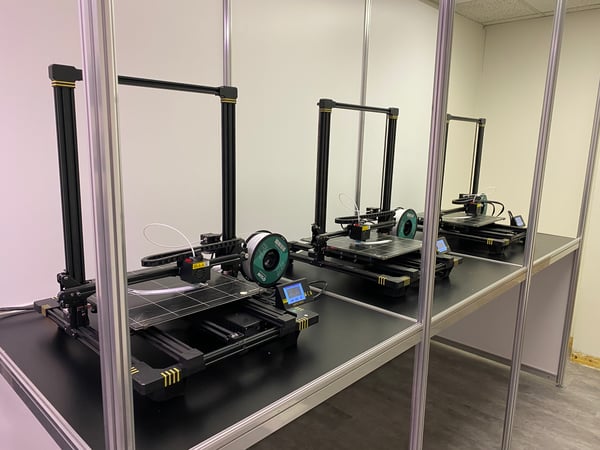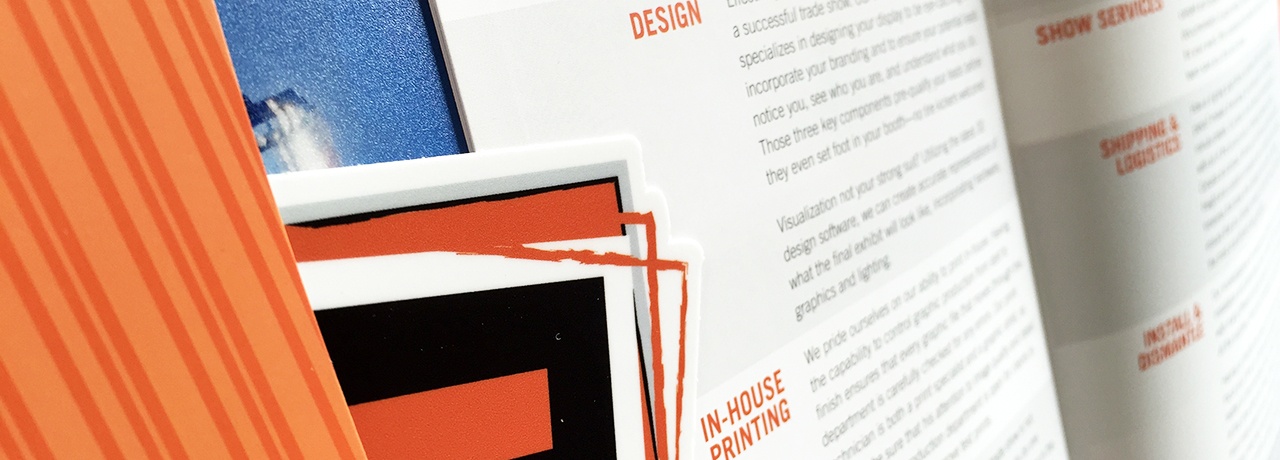- Home
- Blog
Is 3D Printing the Future of Manufacturing?
Posted by Tracey Moore | Topics: Office News, Knowledge Base, Custom Displays, Experiential Activation | on Jan 6, 2021 4:15:00 PM
Towards the end of October, David and I were having lunch together. He casually mentioned that it might be cheaper to buy a 3D printer to create some connectors he needed for the ATCO Christmas Light activation than purchasing and shipping them in. As I begin running the costs through my brain, I say, "Interesting, maybe that would be a good idea."

Fast forward one week. I walked into the office and came face to face with a weird-looking contraption creating a solid object that reminded me of something I would have seen on The Jetsons cartoon show I watched as a child.
If you have no idea what I am talking about… zip it! I don’t want to hear how young you are! I was enthralled watching it work and made the mistake of telling David how cool I thought it was. Fast forward two more weeks, and we owned three of them. So far, we have used them for two large projects, and they have over 600 hours of printing on them already!

At this point, I realized I need to start learning more about 3D printing because it has now become a daily part of Exhibit Studio's production process, and I'm going to share what I have learned so far in my brief introduction to 3D printing
An engineer and physicist by the name of Chuck Hall invented 3D printing in the 1980s. He created the SLA 3D printer and the STL file format that is the industry standard that we still use today.
3D printing is also known as Additive Manufacturing and is a method of creating a physical object from a 3-dimensional digital file. Basically, thin layers of material (plastic, powders, resin, metals, etc.) are built on top of one another to create a 3D piece. At some point in my research, I read that it is similar to looking at a rock formation that develops thin layers over thousands of years. 3D printing does it at a much smaller scale and much faster.

Traditionally, we have all used what they call Subtractive Manufacturing to build parts. In layman's terms, this is like taking a piece of plywood and manually cutting a smaller object out of it. The downside to this is the wastage and the labour.
The technology has come a long way since it was invented. Still, it has only been in the last few years that it has taken off for 3D printing enthusiasts and the manufacturing industry.
Many companies are using 3D printing to increase their efficiency and lower production costs. Companies such as GE, Boeing, Google, and Invisalign are using it to build home appliance parts, jet engines, consumer electronics, and dental devices.
I read in Harvard Business Review that the U.S. military has been using 3D printed drones in Iraq and Afghanistan. They are printing the entire body of these unmanned drones, with 132-foot wingspans, in one 3D print. That seems crazy to me!
In fact, they have recently 3D printed an entire three-story apartment building located in Germany. The group constructing the building says it will take six weeks to print. Maybe I am just showing my age, but this is mind-boggling to me!
Our 3D printers provide invaluable support to our production team in our world of trade show display and experiential fabrication. On a larger scale, I believe we are only beginning to see the true potential of where 3D printing will go. More and more, we are starting to see it used in an increasing number of applications. It appears that it will be a competitive alternative to traditional manufacturing and will revolutionize or replace many older methods. It can save energy, save time, and reduce waste, all of which are priorities for today's business community.
Recent Blog Posts
Subscribe to the blog
Introduce Your Blog
Who's writing it? Why are they writing it? Why should potential readers pay attention to the people writing it? Introduce it in a few sentences, and maybe add a picture of the primary authors.
Posts by Topic
- Knowledge Base (41)
- Trade Show Strategy (26)
- Displays (16)
- Trade Shows (15)
- Insider (14)
- Trade Show (12)
- Graphic Design (10)
- Trade Show Budgets (10)
- Custom Displays (5)
- Graphics (5)
- Covid-19 (4)
- Experiential Activation (4)
- Portable (4)
- Events (3)
- Experiential Marketing (3)
- Fabrication (3)
- Office News (3)
- Portable Displays (3)
- Print and Production (3)
- A/V (2)
- Modular Displays (2)
- Technology (2)
- Trending (2)
- Branded Environments (1)
- Discounts (1)
- Experiential (1)
- Holidays (1)
- Installation (1)
- Pop-up (1)


